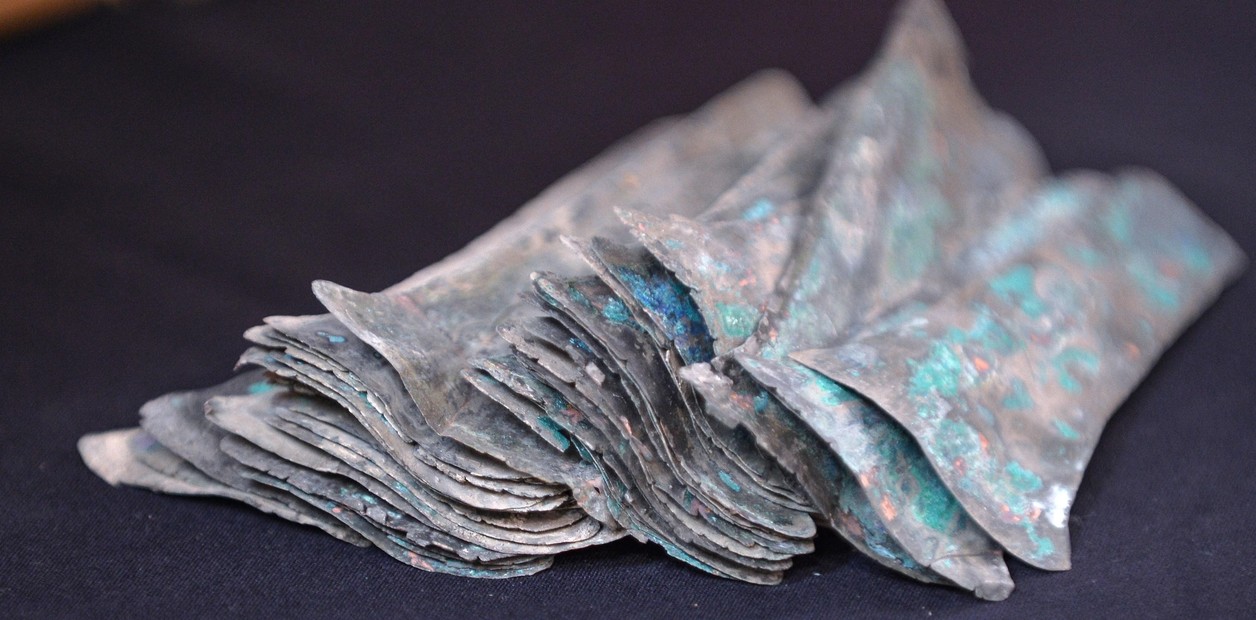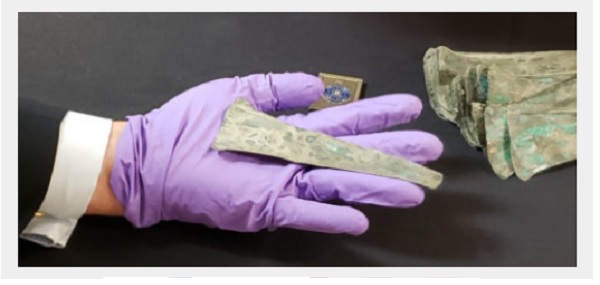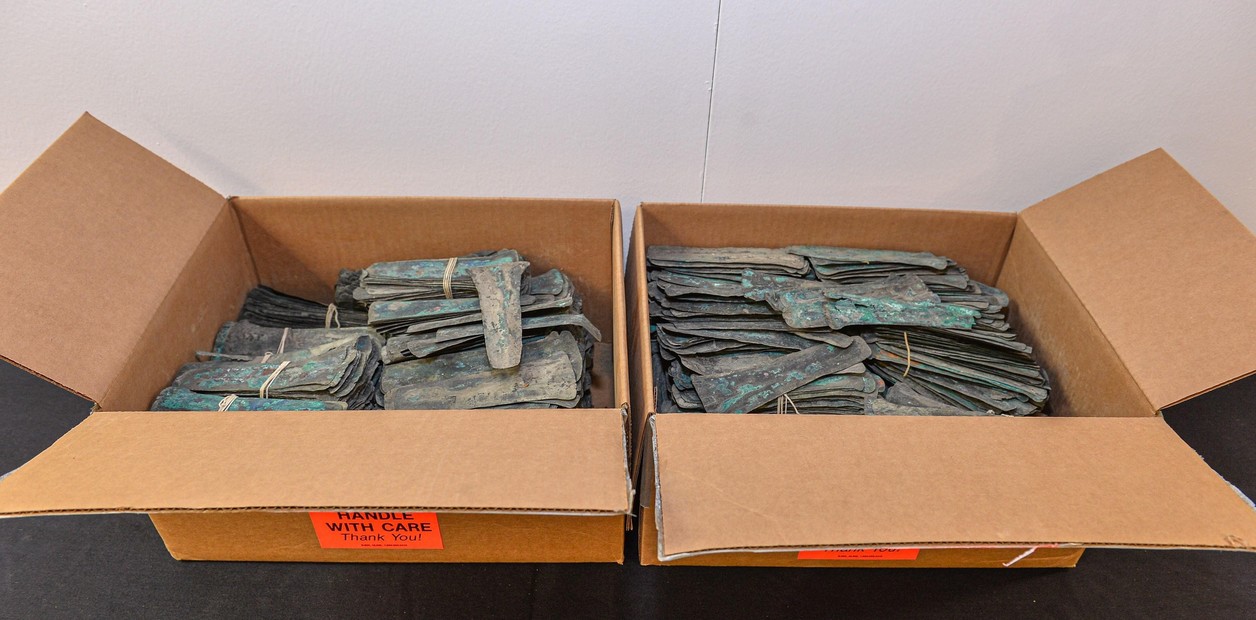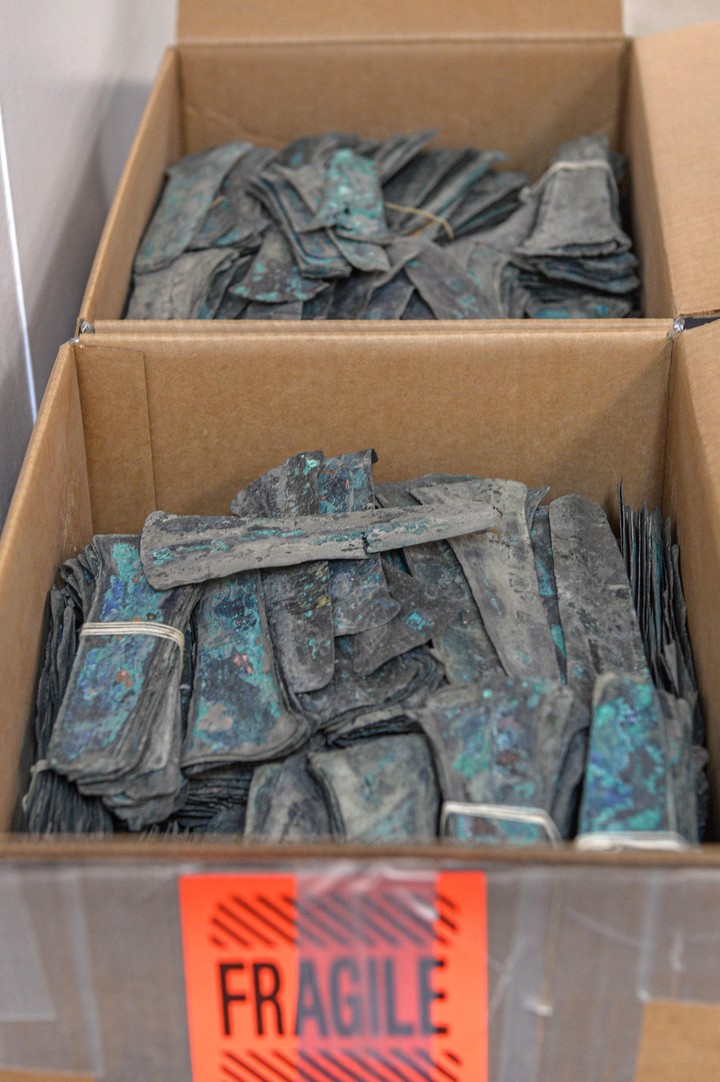Tak tohle jsem opravdu neznal.
The FBI helped recover nearly 4,000 unique ax coins
Categories: Finds and rescue research abroad , Nálezy nejenom s detektorem kovů v USA, severní a jižní Americe
A collection of 3,990 "coins" from the period between 1200 and 1500 was returned to Mexico. The pre-Columbian money belonged to an American private collector who acquired it at a Texas coin fair in the 1960s.
The tongue-shaped, or rather small axe-shaped, money was made from an alloy of arsenic and copper. They are so thin that they could easily be stacked or rolled. They were very easy to handle and convenient to store. Most have been found in depots, often in graves, sometimes still in their original bundles or bundles. This collection was probably the only one of its kind in the whole world. The collection is invaluable to Mexican culture and history...
Axe money arrived in western Mexico around 1200, probably from the Andes (present-day Ecuador and Peru). Other feather-shaped money, equally thin and easily stacked, has been found in these mountains before. Such finds are significant not only because of their age, but above all because they testify to advanced money exchange and metallurgical skills between ancient Mexican and Andean peoples. Also of interest is the information provided by 16th-century chroniclers who repeatedly mention the axe coins in connection with trade between the natives and newly arrived Europeans.
Mexican authorities informed the FBI of the existence of the collection as early as 2013, when they were taken to Spain for auction. Mexico's National Institute of Anthropology and History (INAH) then began authenticating the coins in order to request their return. As the two countries are linked by the UNESCO Convention for the Protection of Cultural Heritage (signed by Mexico in 1972 and the United States in 1983), the return process has now been successfully completed and the coins returned to their country of origin.
The name of the collector has not been released by the authorities. However, the former owner handed over the coins without any problems. He will not be prosecuted because he acquired them legally in the 1960s, when the law on the export of cultural relics from Mexico was not yet in force.




Roman Němec
Sources: en24.news, themazatlanpost.com, thehistoryblog.com
The article is included in categories:
- Archive of articles > Archaeology > Finds and rescue research abroad
- Archive of articles > Archaeology > Finds and rescue research abroad > Nálezy nejenom s detektorem kovů v USA, severní a jižní Americe
Post
Moc zajímavé, díky za článek.
Díky za článek, opravdu zajímavý a také jsem nic takového, zvláště z této oblasti světa nevděl. 
Zajímavý článek a informace z historie peněžnictví.
Kříženec mincičky a papírové bankovky je úžasný nápad.
Jen si představte jak by se pronesly v peněžence...
:o))
Že mince nemusí být jen kulatá, je poznatek stejně starý jako lidstvo samo, příkladem mohou být i staré východo-asijské mince jako jsou třeba z Mongolska,Číny,Tibetu a Japonska..










